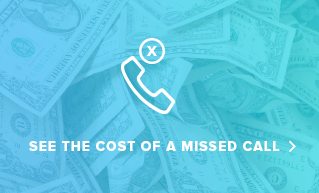We’re living in the golden age of instant gratification. With the click of a few smartphone buttons, we can order takeout, apply for a job, or book a vacation to Tahiti. There’s no denying it: technology has forever transformed our expectations of businesses. We expect instant customer service, and when we don’t get it, we’re quick to turn to other options.

Whether on the phone or in person, making your customers wait around for service is a fast track to frustration. Research shows that lengthy customer wait times make people feel unwanted and unappreciated. One study discovered that two-thirds of surveyed customers said they would be willing to wait two minutes or less for service. A whopping 13 percent expected no wait whatsoever. With so much emphasis on instant gratification, it’s no wonder so many businesses are looking to manage customer wait times more effectively.
If you’re hoping to switch up the way your organization handles wait times in person or over the phone, try some of these strategies on for size:
Manage Expectations Upfront
When deciding how to manage waiting customers, put yourself in their shoes. Free time is incredibly valuable, so start off on the right foot with customers. Begin your customer experience by letting them know how long they can expect to wait for assistance. Instead of hanging around your office, they may have time to run a quick errand or grab a cup of coffee. Many companies are also offering callers the chance to receive a call back in lieu of waiting on hold. Any way you can be transparent and offer options will build credibility and respect from your customers.
Keep Customers Updated During Busy Times
In a perfect world, nobody would have to wait for service. Unfortunately, unforeseen delays can have a serious domino effect. One small thing that goes wrong can have an impact that trickles down to the customer’s level. Thankfully, good customer service isn’t about being perfect. Should you fall behind schedule and anticipate longer than average wait times, be honest about the situation. Share your anticipated customer wait time early and often and you’ll never be accused of wasting time.
Make Customer Wait Time Entertaining
Historically, hold music has always been grating. At best, callers are treated to tinny renditions of classical tunes. At worst, they’re forced to endure terrible elevator music style songs. While some companies have moved away from hold music altogether, businesses would do well to improve upon the strategy instead of eliminating it altogether. While objectively terrible, hold music was designed to entertain callers stuck on hold. Instead of a loop of music, consider sharing fun facts, educate people about your company’s philanthropic activities, alert them about upcoming specials, or perhaps even slip a few good-natured jokes in there. Channel this into your in-person customer wait time strategy. Show movies in your waiting room, offer free coffee or popcorn for customers, or keep the latest magazines available to browse. You don’t have to reinvent the wheel to make waiting around less agonizing!
Invest in Skilled Receptionists
Customer service agents and receptionists play a vital role in reducing wait times on the phone. An experienced agent can handle a wide variety of calls, offer helpful solutions, and keep conversations short and professional. If you try any customer wait time management strategy, make sure you’ve got a highly-trained, resourceful customer service agent to employ it! Don’t have the budget to bring on a full time receptionist or team of support reps? Remote receptionists or an outsourced customer service department can bridge the gap between your existing model and the one you hope to offer without breaking the bank.
Know Your Blind Spots
Regardless of how efficient your organization might be, there’s bound to be kinks somewhere in your system. Setbacks inevitably impact customer wait times, so it’s worth doing a little investigating into the most common causes of clogging. Take an honest inventory of how your policies and procedures may be hindering your productivity. By identifying issues that directly influence the customer experience, you’ll be able to work towards eliminating them entirely.
Dispense Information Ahead of Time
There’s nothing more frustrating than standing in a long line before realizing you’re in the wrong queue. The same goes for explaining your whole situation over the phone only to find out you’re speaking to a department that can’t help you. Do a full review of your automated phone menu, website, and all customer-facing information to ensure your customers aren’t getting sent to the wrong place. An in-depth look at the customer’s journey can help you steer people in the right direction and prevent a line before it starts. This may require you to redouble your efforts to engage with customers over the phone, but having a call center partner covering your overflow calls can mitigate the impact felt by your team.
Partner with MAP Today
One of the easiest ways to minimize your average customer wait time is to join forces with a professional call center. MAP Communications offers 24/7 support and has proven successful at creating customized customer support programs time and time again. We’re offering a free week-long trial of our call center services right now, giving you a taste of how easy life can be with MAP at your side! If you’re eager to learn how to reduce wait time for customers, sign up for our free trial today.
Here are some related articles you might be interested in:
How Long are Customers Willing to Wait? [Infographic]


